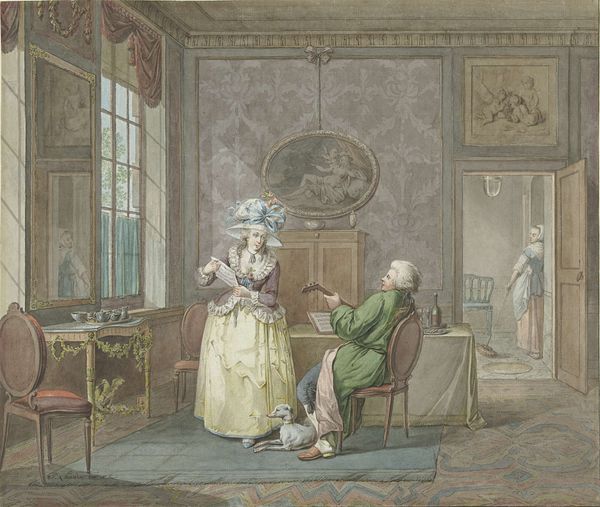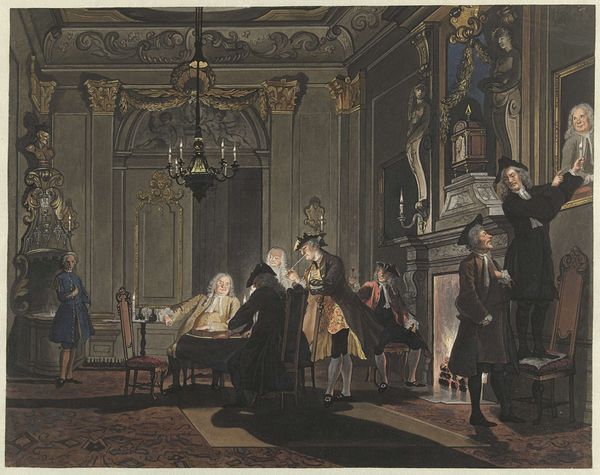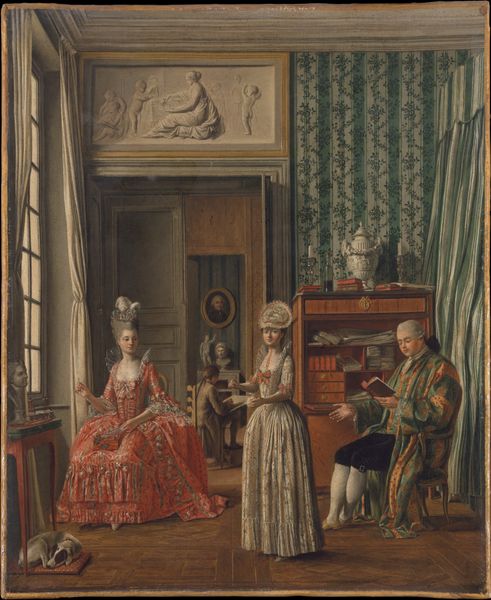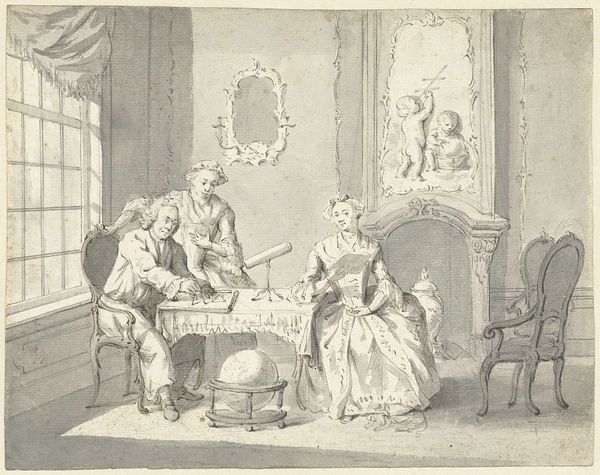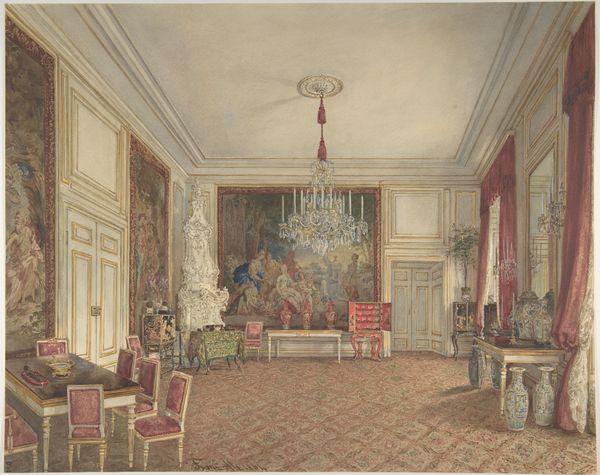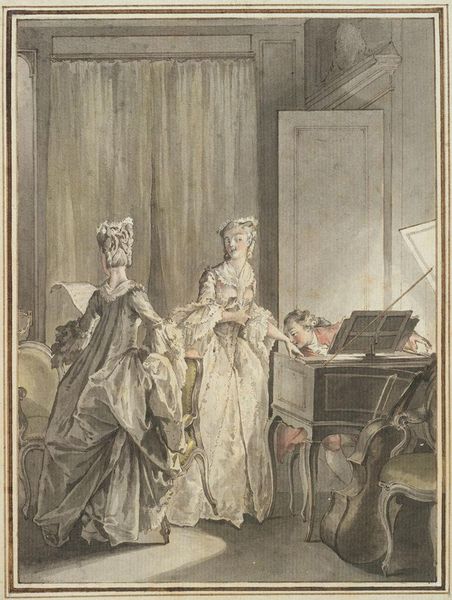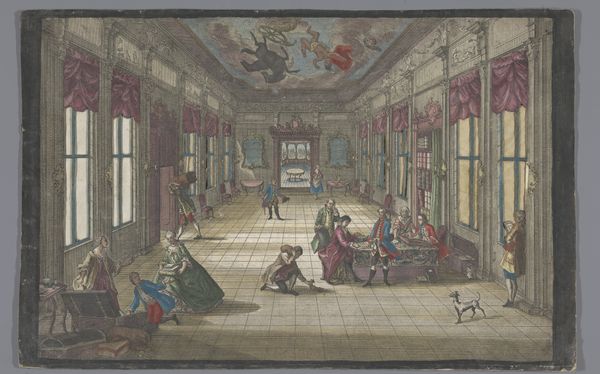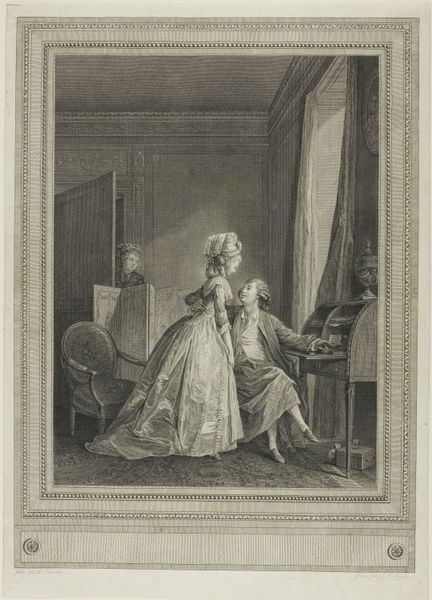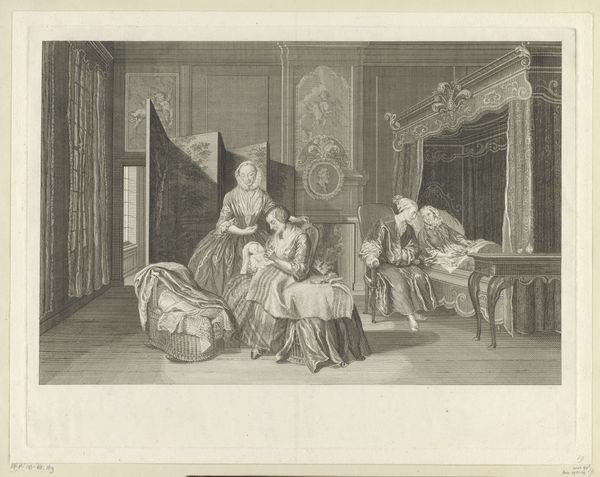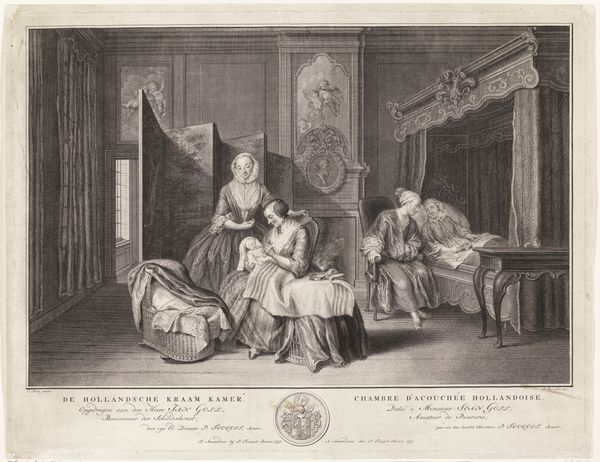
painting, watercolor
#
portrait
#
painting
#
traditional architecture
#
watercolor
#
genre-painting
#
watercolor
#
rococo
Dimensions: height 260 mm, width 420 mm
Copyright: Rijks Museum: Open Domain
Editor: This is Cornelis Troost's "Kraamkamer," created in 1748. It's a watercolor painting currently housed at the Rijksmuseum. The opulence of the room and the seemingly staged arrangement of the figures strikes me. How do you interpret this composition? Curator: Indeed. Note first the deployment of line; observe how Troost articulates space via orthogonals, subtly guiding the viewer’s gaze. The room itself is almost aggressively ornamented. Do you see how the Rococo style dominates through the curvilinear motifs, which create visual unity? Editor: Yes, it is incredibly detailed. How do the figures themselves fit within this overall structure? Curator: Consider how each figure's placement functions. Their arrangement within the frame emphasizes the significance of the domestic setting. The carefully orchestrated scene suggests more than mere documentation. Consider, too, the tonal range. Notice how the delicate washes of watercolor enhance the scene's overall effect and emphasize detail. Editor: It's interesting to view it as such a structured space, rather than simply a scene of a family with a newborn. Curator: Precisely. The subject matter, a birthing room, becomes secondary to the aesthetic order. It’s the meticulous arrangement, the calculated deployment of color, that constitutes its artistic merit. Are you perhaps swayed towards acknowledging formal concerns above the purely narrative? Editor: I think I'm starting to see the emphasis on form over content now, thanks to you. Curator: Then we have together elucidated the power of structure!
Comments
No comments
Be the first to comment and join the conversation on the ultimate creative platform.
